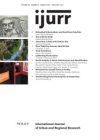Over the past two decades, converted loft spaces have emerged as an important element of the North American inner‐city landscape. Originating within the specific social and economic conditions of Manhattan’s SoHo (South of Houston) District in the 1970s, lofts have come to exemplify a conjunction between culture and economy in the restructuring of the contemporary city. In the gentrification literature, however, the idea of ‘culture’ and its role in urban change remains weakly conceptualized as ‘arts‐related investment’ and ‘heritage preservation’. In this paper I untangle this relationship and realign the cultural with socio‐spatial practice to examine the production of a loft landscape in inner‐city Montréal. This case study illustrates the weak role played by capital accumulation strategies in the production of this landscape in Montréal and highlights the importance of a North‐America‐wide cultural construction of the SoHo loft and its reproduction in other cities. I argue that the media serves as a site and agent in the re‐coding of inner city industrial landscapes by repeatedly representing lofts as the ‘authentic’ domain of the avant‐garde. In the case of Montréal, the reconstruction of a loft landscape further depends on local cultural forms that map and translate the loft lifestyle and aesthetic in the local material environment and build relationships between local conditions and identities, and SoHo. Finally, drawing on interviews with Montréal loft tenants, I illustrate how inner‐city identities are constructed through socio‐spatial practices.
Details
Written by:
Julie Podmore
Digital Object Identifier (DOI)
10.1111/1468-2427.00140
About DOI
Read full article as PDF
Read full article as HTML
See the references for this article
